The year’s September/October protest against the US military base in Pine Gap, Northern Territory was the catalyst for a booklet to provide a history about the first protest campaigns held against North West Cape base, Western Australia in 1974, Pine Gap base (NT) in 1976, Nurrungar base, South Australia in 1977 and Omega Base, Victoria in 1978. These initial protests were organised by Campaign Against Foreign Military Bases in Australia (CAFMBA).
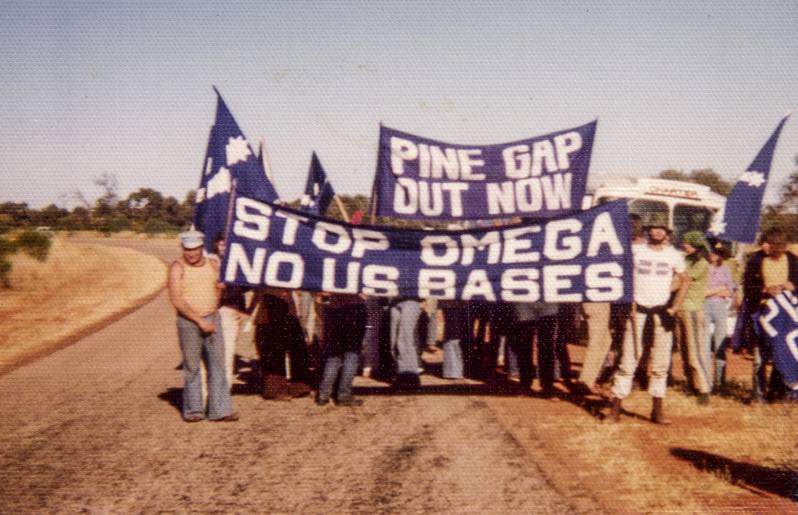
The Campaign Continues

This booklet was made possible by the commitment of activists from earlier anti-bases campaigns, including members of Spirit of Eureka. The contributed photos and histories from Brian Boyd and others are greatly appreciated.
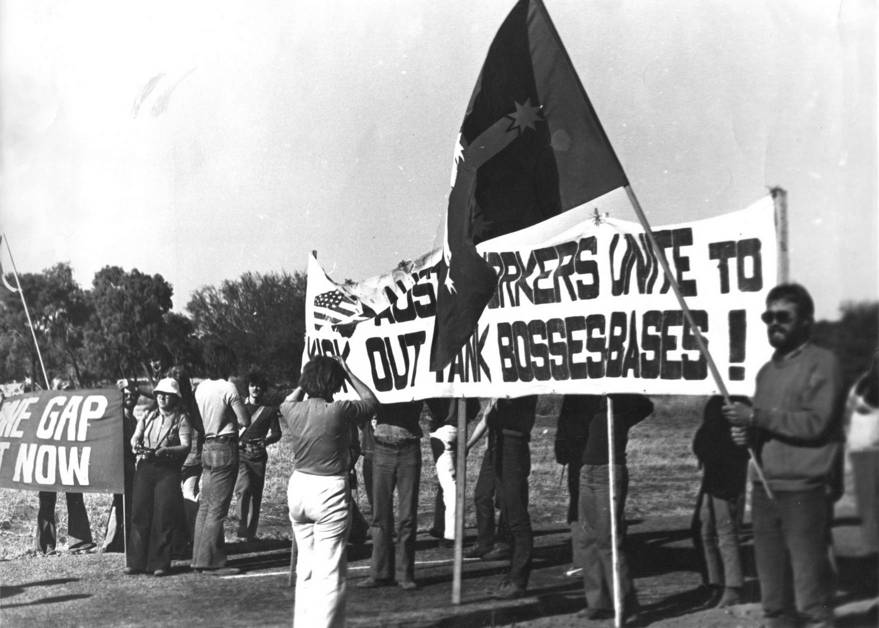

Pine Gap Today
Introduction
2016 marks the 50th anniversary of the establishment of the US intelligence and military communications CIA spy base at Pine Gap, outside Alice Springs in central Australia.
It also marks the 40th anniversary of a first major protest at the highly secretive military base in 1976 and provides a timely marker to heighten public awareness of the threat of such bases continuing to operate and expand in this country, locking Australia into the US global war machine.
The First Nations People
The extensive US military and intelligence base Pine Gap occupies Aboriginal lands of the Arrernte people who are the original custodians of this land. The Arrernte people were never asked for their permission to build Pine Gap on their land.
Arrernte elder Chris Tomlin wrote in a letter: “It’s not only Black Australia that has a sovereignty issue. The Arrernte people have been the custodians and peaceful protectors of their country for thousands of years. Our sovereignty is contained in our songlines, stories and dances, which have been handed down over thousands of years.
“As the lawful custodians we are responsible for what occurs on our land and the harm it brings to the rest of the world. The activity of the facility at Pine Gap has implicated us in criminal military actions, which threatens the dignity of all people, implicates us in war crimes and generates instability and conflict around the globe as a consequence of US imperialism.”
Long history of opposition to Pine Gap
Ever since the establishment of Pine Gap in 1966, concerned Australians have protested and demanded it be shut down. This booklet documents some of this long history of public opposition and details additional expansions of the base that make it an even more important weapon in the US arsenal for its imperialist wars.
The 1976 national cavalcade and protests at Pine Gap were followed by national protests in 1983 and 2003 at the base. For 50 years public campaigns to close Pine Gap continued and included a few Labor politicians in the Whitlam government, trade unionists, peace, independence and anti-war activists and organisations. Most recently, in the last 5 years of his life the former
Liberal Prime Minister Malcolm Fraser was strongly calling for the closure of Pine Gap, removing US bases and US marines from Australia and promoting an independent Australian foreign policy.
Campaign Against Foreign Military Bases in Australia
In May 1976, approximately 150 anti-war and Australian independence activists and supporters from Sydney, Melbourne, Adelaide, Perth and as far away as New Zealand, travelled by hire bus and private vehicles to the Northern Territory to express their total opposition to the presence of Pine Gap, a foreign military base on Australian soil.
For most of the 1970’s there was an active national campaign against all foreign military facilities. It was led by a coalition called Campaign Against Foreign Military Bases in Australia (CAFMBA). Most states had a small co-ordinating committee structure that worked to publicise the workings and functions of these highly secretive installations.
In the 1970’s the bases that attracted most attention were: North West Cape (WA), Pine Gap (NT), Nurrungar (SA), Omega (VIC) and the Watsonia Signals Satellite Dish (VIC).
All attracted various levels of protest activity at the time. These patriotic, anti-war, pro-independence activists deserve acknowledgement and underscore why such protests should continue. The significance of the anti-Pine Gap action in particular, holds valuable lessons for continuing campaigning and building a broad people’s movement to rid Australia of foreign military bases and for Australia’s independence.
Pine Gap
2016 provides a timely stake in the ground to again look at the question of foreign military and intelligence bases continuing to operate in our country.
The revelations in recent years by Wikileaks and whistleblower Edward Snowden clearly illustrate that massive global surveillance of all countries and their citizens has occurred for years and continues to this day. The role of US bases in Australia in this exercise is not in dispute.
Pine Gap in particular has, over the last 40 years, increased its capability exponentially from 9 radomes to 33 radomes.
Pine Gap is one of the largest and the most important US military intelligence gathering and communications base outside the US.
The existence of Pine Gap as a key US military facility integrates and co-opts Australia into US strategic planning and execution of wars, and relegates Australia to the status of a subservient client state and a servile camp-follower of the US. Australia’s independence and national interests are overruled by the foreign policies and global military objectives of the United States.
Pine Gap is located 18 kilometres from Alice Springs in the Northern Territory. Officially called the Joint Defence Facility Pine Gap, the base was established following an agreement signed on 9th September 1966 between the Australian (Holt) government and the US (Johnson) government. It became fully operational in 1970.
Its original purpose was to monitor hostile ballistic missile launches and to analyse the data collected by orbiting CIA satellites. This role continues today, but has now expanded to include the interception of mobile phone and satellite communications, which are used to supply target data to US military drones as well as land and sea-based missile defence systems.
Although nominally a “joint facility” Pine Gap is strictly under the control of the US National Reconnaissance Office (NRO), with the Australian Signals Organisation receiving ‘intelligence’ but having no say in the current use of the base for drone attacks in foreign countries.
Pine Gap exposes Australia to the danger of being dragged into war as a collaborator in any political or military conflict involving the United States. This almost certainly makes the Pine Gap base and nearby Alice Springs a nuclear target in the event of war between the US and any nuclear armed country.
Even if such a conflict could be contained to conventional weapons, Australia could still suffer from disruption to trade routes, or be subject to sanctions as a result of hosting this base and the US Marines and Air Force rotations through Darwin.
Pine Gap is a direct and present threat to the people of Australia and other countries as long as it continues to exist.
We should have no illusions that Australia is protected under the ANZUS treaty. The terms of this treaty only oblige the US to “consult” if we are attacked by another country. The US would only intervene if it considered its own interests to be at stake. On the other hand, if the US was either the attacker or the attacked, Australia would be automatically dragged into war with no consultation.
Australia’s exposure to the dangerous consequences of an American war has long been recognised.
The stationing of a major US military and intelligence base on Australian soil, not only deeply integrates and enmeshes Australia into US foreign policy objectives and its wars of aggression. It also has important ramifications for Australia’s political sovereignty and independence. The critical importance of Pine Gap to America’s foreign policy objectives and its industrial-military complex requires subservient and compliant Australian governments and main opposition parties.
The importance of secretive Pine Gap to the US economic and military operations briefly came to light in 1974-75 when the then Labor Prime Minister Gough Whitlam expressed dissatisfaction with the CIA’s involvement in its operations. Whitlam warned the Americans that the Australian government may close it down. Not long after, on 11 November 1975, a parliamentary coup was engineered by the CIA and the Whitlam government was dismissed by the Governor General with strong connections to the CIA. (Wikileaks and Snowden)
All patriotic citizens should take a keen interest in what is happening at all of these secret locations. Self respect as a nation requires this to be so.
Pine Gap and the US-Australia Alliance
When Pine Gap was established 50 years ago, the Australian public was told that the ANZUS treaty between the U.S., Australia and New Zealand authorised the base and further that it would be jointly run and managed by the U.S. and Australian governments. Both of these statements were and remain untrue.
The ANZUS treaty merely imposes an obligation on the U.S. to “consult” with Australia in the event of a direct external military threat. There is not and never has been any obligation to defend Australia in these circumstances.
As to “joint control” of Pine Gap, it has been publicly acknowledged by numerous Australian Federal Governments that the base is solely controlled by the U.S. through the C.I.A., its successor the National Reconnaissance Office and its contractors. None of the other foreign bases on Australian soil (and coincidentally they’re all U.S. eg. Omega, North West Cape, Nurrungar etc) were or are “jointly controlled” either. With the establishment of the “Five Eyes” surveillance and intelligence network, some US bases have become obsolete while others remain operational.
The establishment and present existence of Pine Gap flows from the reality that, like any other dominant imperialist superpower, the US does not have allies per se. Its international relations are based on its view as to whether other countries are either its enemies or its puppets/lackeys. Since 1945 and the rise of the U.S. as a dominant superpower Australia has enjoyed the latter status.
Pine Gap – an important part of the US industrial-military complex
Of the 1000 personnel at Pine Gap 10% are Australians, either Australian government employees or Australian employees of one of the US conglomerate weapons manufacturing contractor’s branches in Australia, eg. Raytheon. Some of the other 90% are US government employees, including the army. However most are employees of the US arms manufacturers’ contractors brought to Australia. They don’t pay taxes or have to go through customs and are protected by the Australia-US Status of Forces Agreement which exempts them from complying with local Australian laws.
Pine Gap is a US government facility under the National Reconnaissance Office (NRO), Central Intelligence Agency (CIA) and National Security Agency (NSA) who over the years have contracted out most of Pine Gap’s wide ranging daily operations, management and maintenance to the world’s biggest arms manufacturers.
Contractors at Pine Gap include some of the world’s major US aerospace, electronics and weapons hardware companies, such as Raytheon, Boeing, Northrop Grumman and General Dynamics, as well as major computer companies, such as IBM and Hewlett-Packard. Raytheon is by far the largest contractor at Pine Gap.
These companies are the main, if not the sole, suppliers of equipment at Pine Gap (eg. satellite dishes and computers, electronic devices, etc) and also provide specialised technical and electronic services.
The expanded role of Pine Gap
Although Pine Gap was established in the 1960’s (as were most of the other foreign U.S. bases around the world which currently exceed 900), the end of the “Cold War” has not diminished its importance to the U.S. Indeed, its importance has been expanded. From originally being designed to communicate with US military forces and monitor USSR and Chinese nuclear missile tests, its functions now include collecting military, political and economic data from many countries and regions, eavesdropping on civilian and military activities and communications (including personal data from computers and mobile phones, etc), directing drone strikes in the Middle East and elsewhere. It includes listening and collecting political and economic data and information on Australia. Some people would call this espionage.
Over the past 20 years, and especially in the last 10, Pine Gap has expanded exponentially. In that time its capacity has increased from 9 radomes to 33 radomes.
It plays a crucial role in US wars and in identifying and tracking targets for its murderous drone attacks around the globe.
Since the failure of the “scatter gun” approach to foreign military intervention pursued by the regimes of Clinton and both senior and junior Bushes, the US is currently adopting what it calls a policy of “disaggregation” in both the Middle East and the Asia/Pacific area.
This policy involves a dramatic lessening of direct US involvement and instead the promotion of “proxies” to carry out on the US’ behalf its foreign policy objectives.
These proxies in the Asia/Pacific region are principally Japan and Australia. Witness the 2015 change to the Japanese constitution which now permits the establishment and use of military forces whose sole purpose is not defensive. Witness the early 2016 RAAF involvement in US “freedom of navigation” in disputed areas of the South China Sea and the acquisition of 12 “state of the art” submarines by Australia – this in the light of the 2016 White Paper statement that there is “no more than a remote chance of a military attack on Australian territory by another country”.
One would add amongst other things the permanent stationing of US marines in Darwin. To defend Australia from what threat?
Why the US “pivot” and aggression in our area?
In November 2011 President Obama visited Australia and made the first public announcement of the US Pivot into the Asia-Pacific. In October 2012 the then US Secretary of State, Hilary Clinton, also graced the shores of Australia to re-affirm and strengthen the US-Australia military alliance and thank both major parliamentary parties for opening up Australia to stationing 2500 permanently rotating US marines in Darwin, upgrading and expanding Australian naval and airforce facilities to integrate the US military, and for being an unquestioning and servile US deputy sheriff in the region.
Significantly, the public announcements on the US Pivot into Asia-Pacific were made by both Obama and Clinton in the Australian parliament. The visits and announcements signalled deeper political and military integration of Australia into the US war machine and as a launching pad for its wars in the Asia-Pacific.
And what is the US Pivot into Asia-Pacific really about? It’s about consolidating and expanding the US economic, political and military domination in the region. The rapid economic growth and expansion of China is viewed by the US as a threat to its economic, military and political hegemony in the region.
The US Pivot announced that by 2020 the US will relocate more than 60% of its military naval, air and ground forces from around the world to the Asia-Pacific. New bases are being built, established military, defence facilities and bases in host countries are being upgraded and expanded to accommodate the rapidly increasing US military presence in the region. Some of the previously decommissioned bases closed down by the people’s antiwar movements have been re-opened in the Philippines.
Thomas Friedman, the famous US economist and New York Times columnist wrote in 1999, “The hidden hand of the market will never work without the hidden fist of the military. McDonald’s cannot flourish without McDonnell Douglas, the designer of the F-15. And the hidden fist that keeps the world safe for Silicon Valley’s technologies is called the United States Army, Air Force, Navy and Marine Corps.”
Friedman clearly demonstrates that US economic domination cannot be sustained and enforced without the backing of the US military.
If we were to accept the consistent line of the mainstream US and Australian media, we would also accept that the increased tension in the Eastern and South China Seas is solely as a result of Chinese expansionism and trampling over the legitimate territorial claims and right of China’s neighbours.
In fact most countries in this region support a rules based global order with conventions designed to prevent the very situation we see at present.
Territorial disputes between countries are not new and are commonplace. An important convention designed to prevent these disputes becoming antagonistic is the United Nations Convention on the Law of the Sea (UNCLOS). This convention grants the right of innocent passage through international waters. “Innocent passage” refers to merchant marine activities and not military passage between a country’s 12 mile territorial limit and the edge of its 360 mile exclusive economic zone. The US has refused to ratify the UNCLOS (unlike China and many other South East Asian countries).
The fact that 60% of the US’s naval forces will be stationed in the Asia/Pacific region by 2020 gives a lie to any suggestion that the US is interested in diplomacy and peaceful discussion to resolve territorial disputes (which incidentally do not involve it directly).
Pine Gap continues to function as an essential part of an aggressive and expansionist US foreign policy in which Australia is expected to play an ever-increasing role of a US Deputy Sheriff. All of this is aimed primarily at our regional neighbours, not those of the US.
The Pine Gap military communication and intelligence base is critical to the US preparations and conduct of wars around the world. We should be gravely alarmed at this prospect.
The campaign against foreign military bases in Australia in the 1970’s
A key element of the struggle to achieve genuine Australian Independence and Sovereignty
The geo-political backdrop of the period was overshadowed by the US emerging from its disastrous neo-colonial misadventure in Vietnam and its heightening global competition with the other superpower, the USSR. The world was often an unsafe place with nuclear Armageddon still a possibility (a real public concern continuing on from the 1950’s and 1960’s). US military bases put Australia directly in the firing line.
The known US bases in Australia in the 1970’s
Clearly, successive federal governments, from Menzies in the 1950’s to Bob Hawke in the 1980’s, through John Howard, Rudd, Gillard and up to Turnbull (ie, Coalition or ALP), have had no qualms in meshing our nation state status to the economic, political and global will of the US regardless of any consequences.
This saw the US military presence grow by the 1970’s to over a dozen bases of varying significance.
In the 1970’s it was known the US had over 700 military bases throughout the world.
These installations were and remain concerned with military communications, military navigation, satellite tracking and intelligence collection.
In the 1970’s the bases that attracted the most attention were: North West Cape (WA), Pine Gap (NT), Nurrungar (SA), Omega (Vic) and the Watsonia Satellite Dish (Vic). While virtually all were described as “joint Us-Australian facilities” they were in reality fully US controlled and operated. The pretence of “joint” management has always been part of the insult to our sovereignty, particularly so in the protest actions throughout the 1970’s.
Over the decades major political controversies have erupted from time to time over the establishment of these bases. A principal area of concern was the potential of being caught up in the so called ‘cold war’ global instability between the US and USSR superpowers that could lead to a nuclear attack on Australia.
More generally was the argument the bases constrained any progress toward a more independent Australia, not only in the areas of defence and foreign policy but economically and culturally as well.
Misinformation
Unfortunately the limited public debate back in the 1970’s continues to this day. It has often been thwarted by suppression of accurate information and by politicians who don’t want the nation’s citizens to know about the full extent of US control of our territory.
Successive governments have been paternalistic, evasive and outright deceptive. Extraordinary secrecy has made sure the Australian public have never been fully briefed on the whole network of US defence and intelligence operations in their own country.
Euphemisms such as ‘space research’, ‘upper atmosphere studies’ and ‘geo-physical testing’ have been used over the years. Some specialist Australian academics have been critical of this contempt, especially since the essential purpose of the bases was, long ago, in the public domain in the US!
Partial revelations
By the 1980’s some small changes in public policy occurred.
Official discussions within the Australian government and defence hierarchy conceded that NW Cape, Nurrungar, and Pine Gap should be considered “high priority targets in the event of a nuclear exchange between the US and USSR”.
This was noted in a 1981 report to the Australian Parliament from the Joint Committee on Foreign Affairs and Defence.
On the 6th June 1984 Prime Minister Bob Hawke in a Ministerial Statement said that “the Government believes that hosting the [US] facilities does bring with it some degree of added risk of nuclear attack.”!
A month later Foreign Minister Bill Hayden stated that“..it is undeniable that in certain circumstances these facilities ( ie Pine Gap, Nurrungar and NW Cape) could be nuclear targets”.
Again on the 16th March 1986 Hayden declared that the US bases are “nuclear targets in certain circumstances, I would think high priority ones in an all-out exchange”.
A decade earlier the protesters at NW Cape and Pine Gap were described as “crackpots”, “crazies” and even “un-Australian” for suggesting the bases were a real threat to Australian safety.
THE 1970’S ANTI US BASES PROTESTS
NORTH WEST CAPE (WA) 1974
By the end of 1971 the CAFMBA was committed to a major protest action against US foreign bases on Australian soil. A ‘Long March’ to the US Naval Communications Station – Harold E Holt at North West Cape, near Exmouth in the far North of Western Australia was decided upon. With its political history leading up to its construction by 1967, the base picked itself for highlighting.
Facetiously named after a conservative politician the US military base was given the go ahead in 1963 by the then Menzies government. It became a major political controversy at the time, with a particularly close federal election looming. The ALP was trying to respond to the Menzies government’s renewed and enhanced ’security agreement’ with the US.
This push was underscored by the then proposed US communications base at North West Cape .
NW Cape had nothing to do with nuclear arms control negotiations but the exact opposite. It was established to provide war time communications for the US Navy’s Polaris nuclear ballistic missile submarine fleet. Deterrent capabilities in the 1960’s were secondary to war fighting capabilities.
There was much public opposition. Many ALP MP’s reflected this view. But the federal ALP opposition leaders Calwell and Whitlam felt the base was not in conflict with party policy as long as it was subject to “joint control”. (The fact that Australia had no nuclear armed submarines in its own Navy, and definitely had no say on what US submarines could or could not do, made such a justification meaningless).
Progressive ALP MP’s insisted the issue go to a Federal Executive meeting. The conservative pro-Menzies, pro US media had a field day beating up the debate within the ALP. The political pressure within the context of the ongoing Cold War atmosphere saw the vote going 19 to 17 in favour of North West Cape. A concocted story about the ALP’s “36 faceless men” influencing the Opposition’s parliamentary business, coupled with a Menzies “scare” campaign, saw the conservatives just win the November 1963 federal election.
After it was established, the task of North West Cape was expanded to passing on direct military satellite communications to both the US Navy surface fleet and the increasingly more modern hunter-killer submarine fleet.
The Australian military never had access to the ‘message traffic’ which passed through NW Cape. Clearly a situation not compatible with the concept of ‘joint facility’ never mind basic Australian sovereignty.
The concern that NW Cape was a nuclear target never went away. By the advent of the Whitlam Government in 1972 a wider knowledge of what NW Cape actually did was pursued. In 1973 the ALP Deputy PM and Minister for Defence Lance Barnard went to Washington to sign a so called “Joint Control” agreement for the US NW Cape base. This allowed for an Australian Deputy Commander of the base, although he was forbidden to access the core US communications centre within the base! The agreement also allowed for a handful of local civilians in the nearby town of Exmouth to get some menial jobs on site.
The ‘Long March’ protest to NW Cape in May of 1974 also needs to be seen in the wider political context domestically and the wider lessons learnt within the anti-Vietnam War campaigns. There was a growing awareness generally about the lack of Australian independence.
By 1974 the moderate Whitlam ALP Government was even too much for Washington DC. Some critical comments by Whitlam about the B52 bombing of towns and cities in North Vietnam sent Nixon into a spin. Holding ASIO to account also made the US and the CIA very jumpy.
Three major contradictions began to stand out in the early 70’s Australia as the US defeat in Vietnam unfolded:
*Australia’s ability to control and directly benefit from its natural resources was limited;
*An increasing realisation that Australia was clearly a nuclear target because of the secret US military bases on its soil and-
*the struggle to have Australian culture manifested on TV and in the entertainment industry generally versus being swamped by US productions.
The heightened political awareness around the Vietnam War saw an almost predictable interest emerge in the details of what constituted the war machines of the superpowers.
In particular the role of their spy bases received great attention with the ANZUS Treaty locking Australia and New Zealand into the machinations of the US military/industrial complex.
THE ‘LONG MARCH’
The ‘Long March’ from New Zealand and the eastern States of Australia to the far north of Western Australia took place for several important reasons.
First and foremost it had become more widely known that its key function was to send “firing orders to US nuclear armed missile submarines”, making Australia a definite nuclear target. Secondly, via the one-sided treaty establishing NW Cape, Australia had no control over what the Americans did there, never mind what they did! Thirdly the Menzies government leased to the US a slice of Australian sovereign territory for the insulting rent of“one peppercorn” per year!
The protest cavalcade was set down for May 1974.
Everyone involved knew the base was protected by the draconian 1952-66 Defence Special Undertakings Act which provided for 7 year prison terms for trespass alone. A person could be tried in secret, an even harsher process than that contained in the 1951 Official Secrets Act.
The ‘March’ started in Sydney after by joined by the NZ activists. Melbourne participants went via Adelaide and everyone joined together in Perth. Awareness ‘mini-protests happened across the continent in numerous towns and population centres. Besides highlighting the concerns about NW Cape, the roles of Pine Gap, Nurrungar, Cockburn Sound, Canarvon and the proposed
Omega base were also brought into the conversations. The NZ contingent promoted the fact they had successfully stopped the US Navy Omega base from being built in their country 5 years earlier.
The protest activity in and around Perth attracted hostile government and police responses. The Charles Court WA State government tried to disrupt the ‘Long March’ any way it could, promising in fact to harass and disrupt the convoy all the way up the west coast to Exmouth.
By Perth the protest contingent had grown to 200. Before departing North it was decided a major demonstration and street theatre would be conducted in the centre of the city. Such demonstrations had been earlier declared illegal with much fanfare by the Court government.
State police, reinforced by Commonwealth police and ASIO , were massed against the march through the city. There were running clashes throughout the CBD.
During the street theatre two activists dressed as ‘Uncle Sam’ and the ‘Russian Bear’. The speeches emphasised the protest was against the military activities of BOTH superpowers in the region.
Not just the US bases on Australian soil but also against the growing presence of the Russian Navy fleet in the Indian Ocean. A key specific message given was that during the 1973 Middle East War US President Nixon at one point ordered all US Forces onto an emergency war footing as a show of “brinkmanship” with the USSR. NW Cape was directly involved in that high alert without the Australian government being told.
Ironically the protester dressed as ‘Uncle Sam’ was arrested, the ‘Russian Bear’ was not.
Protesters were pushed onto the footpath only to break away again and again. Numerous arrests occurred. An attempt to get to the official NW Cape office in the city was not achieved.
On TV Premier Court condemned the protest and openly incited both police and public violence against the ‘Long March’ presence while it was in “his” State!
More than a dozen police vehicles and ‘observation’ aircraft were deployed full time for the long trip North.
EXMOUTH
(19-20-21 May)
On arriving at the outskirts of Exmouth (approx. 25 km south of the town) the large police escort suddenly raced past the protest convoy and went into the township itself.
This left Area C of NW Cape undefended! For the next two hours the anti-bases activists flooded into the base risking 7 years prison. A Eureka flag was hoisted high on one of aerial arrays off the side of the road. Many illegal photographs of the infrastructure were taken.
Even a picnic lunch was organised by some protesters inside the forbidden precinct.
Eventually some police double backed, wondering what had happened. Four people were arrested before the whole convoy could move on.
A base camp was set up on the fringes of the Exmouth Caravan Park in sight of the main array of the NW Capes’ huge towering VLF transmitters spread over 18,000 acres. A quick reconnoitre discovered that Area A and Area B (the main gate) were now sealed off by police roadblocks.
A peace concert was conducted on arrival night. A number of locals turned up after an invite leaflet was circulated in town. Some genuinely wanted to see what all the fuss was about. A number of worthwhile conversations were had. By contrast that night and on a few other occasions while the ‘Long March’ was in town , a number of ‘red necks’ and ‘yobbos’ driving small trucks and utes and waving US flags, buzzed the camp. High beam lights, yelled abuse and blaring horns didn’t have any effect.
Later lead protesters were told by others in the town that the pro base element were mainly made up of small contractors who had some work on the base and had been whipped up by the local head police officer and the local Coalition MP.
The whole ‘Long March’ period was overshadowed by a snap federal election that the Whitlam government narrowly won.
Monday morning 20th May was the planned convergence on the main gate of the “ Harold E Holt – US Navy Communications Station”.
Speeches were made, ‘Waltzing Matilda’ was sung and a demand that the base be closed down was made. Some street theatre was attempted. The police cordon moved in and arrests were made. The police were obsessed with grabbing banners and seizing Eureka flags. Senior police openly offered to their junior ranks and civilian onlookers $20 for each flag extracted from a protester. Many scuffles and confrontations were generated over this issue alone. Undercover police tried to provoke locals to join in the fray.
In one of the speeches made via a megaphone it was revealed that some of the organisers of the ‘Long March’ had some time back secured the original peppercorn used as rental for the NW Cape base!
It had been liberated from “an Australian Defence Department safe in Melbourne”.
This news was received by other activists with great glee. The peppercorn had been encased in Perspex and carried across Australia and displayed to the public and the media at some of the regional stopovers.
With great ceremony the peppercorn was thrown over the fence and into the base with the demand the US take it back and the base with it.
The next day the protesters marched back to the front gate. This time there were more police. US military personnel, ASIO and Commonwealth Police took hundreds of photos. A small crowd of onlookers tried to drown out the speeches but failed.
A US flag was suddenly produced and set on fire. As it was hurled over the front gate the police rushed in to make arrests. More altercations ensued. Dozens ended up in the local gaol.
For the rest of the day small groups of activists charged into the scrub and breached the perimeter of the base. Many were arrested. Some by US personnel. Over 40 people appeared at the Exmouth courthouse. Around $5000 was needed for bail money. Cases were adjourned to Perth.
Over the next 24 hours the participants of the ‘Long March’ began to depart Exmouth. As they made their way back across the continent over the subsequent days they visited various towns and cities. Leaflets were distributed by the thousand about what happened at NW Cape.
The whole exercise was deemed a success and a great start to an ongoing campaign against foreign military bases on Australian soil.
POST SCRIPT
*The majority of people arrested had their charges dropped.
*Commonwealth Attorney-General Lionel Murphy ordered the trespass charges against people arrested at Exmouth be dropped because the charges were “trivial”.

Paint – ups declaring opposition to “yankee” bases on Australian soil
were done along the road to Exmouth NW Western Australia.
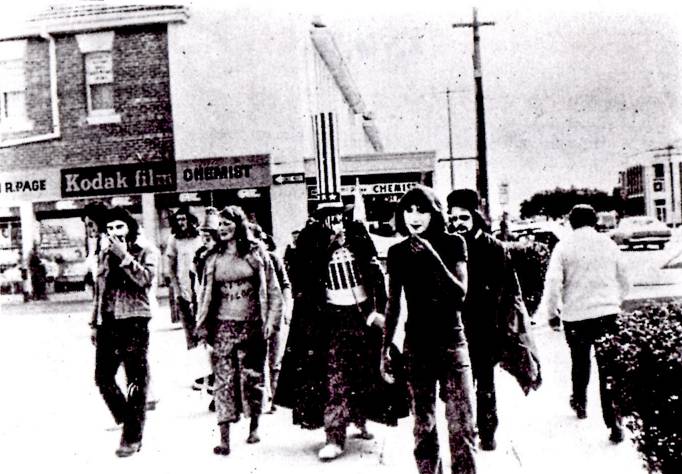
Street theatre in Perth attracted vicious police attacks.
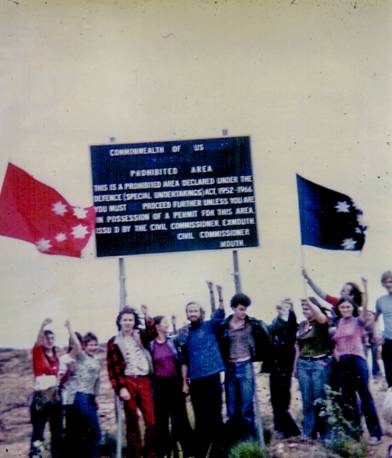
On arrival at the perimeter of the huge US North West Cape military
base an impromtu rally was held in front of the first official sign
sighted.

Police set up road blocks to key parts of the NW Cape base when the
“long March” protest arrived in the area.
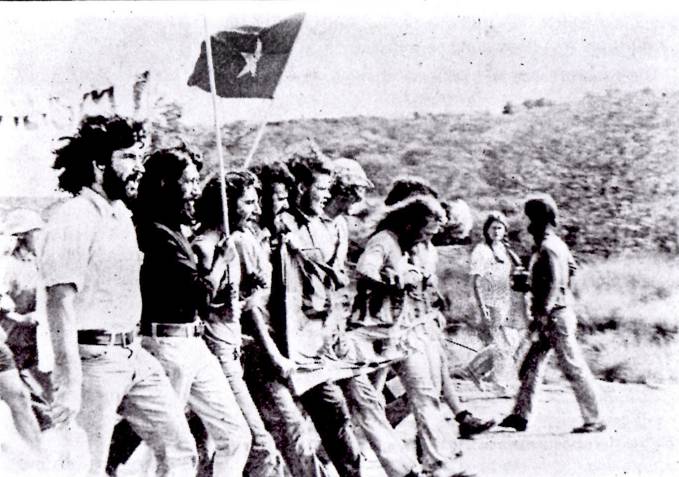
After setting up camp at the edge of the local caravan park at
Exmouth, a march on the front gate of the base was quickly
organised.

Front Gate of NW Cape base.
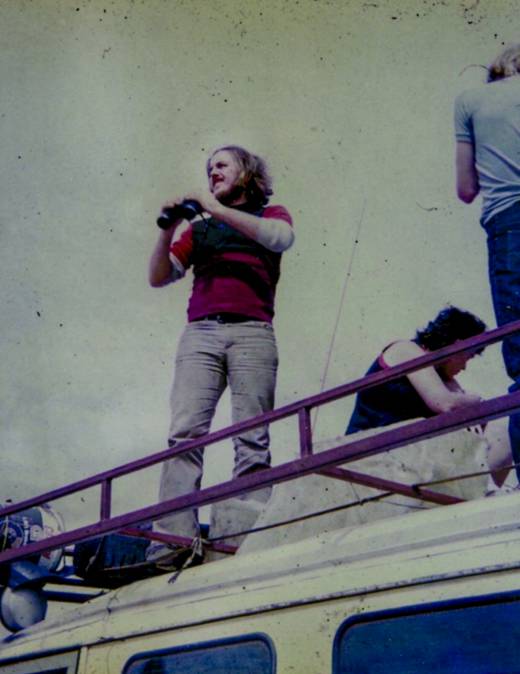
Look-outs were stationed around the caravan park camp site at
Exmouth as local “red necks” had made threats.

Wide spread publicity occurred during all of the “long March”
activities against the NW Cape. Shown is a front page of the Perth
Daily News dated Mon 20th May 1974.
PINE GAP (NT) 1976
By 1976 a second ‘long march’ was called for by supporters of CAFMBA.
This time it was proposed to go to the CIA spy base at Pine Gap outside Alice Springs.
A lot had happened in the two years since the cavalcade to NW Cape in Western Australia. The ALP Whitlam government had suffered a constitutional semi-coup with its sacking by the Governor-General Sir John Kerr on November 11 1975.
By Feb 1976 Malcolm Fraser was running Canberra. Massive protests against Kerr and Fraser had occurred. Such protests were to hound the two conservatives for the next 5 years.
During the last year of Whitlam’s’ parliamentary tenure the presence of foreign military bases in Australia had continued as an issue in the turmoil of the ALP’s soft nationalist and social experiment. The born to rule conservative parties, egged on by their big business financiers, pulled every trick in the book to undermine Whitlam.
Moves to nationalise the emerging resources boom, criticism of the US war in Vietnam and even mentioning that the renewal of the agreement for the US Pine Gap base was coming up, caused more than consternation in Washington, the Pentagon and Langley.
The public spat over these issues triggered a focus on Pine Gap amongst the anti-war , progressive sections of the community including some key left trade unions.
Construction of Pine Gap began quietly in the mid-sixties after a secret treaty for its establishment was signed way back in 1955.
By 1976 there had also been an organisational consolidation around the question of Australian independence with groups like the Australian Independence Movement (AIM) and Students for Australian Independence (SAI). Their publications like ‘Independence Voice’ and ‘Continent’ highlighted the foreign bases question as a key issue facing national sovereignty.
Key progressive unions like WWF (now part of the MUA), the BLF (now part of the CFMEU) and
the ATF (now the AEU) supported the protest and sent representatives.
CAFMBA , after discussions involving Sydney, Canberra, Melbourne and Adelaide activists, called for a convoy of buses and private vehicles to go to Alice Springs in May. Pine Gap was known as an important global link in the US spy satellite network watching the intercontinental ballistic missile (ICBM) sites in Russia and China. It also acted as a communications station for the CIA’s covert activities in Australia and the Asian region.
GOING TO PINE GAP
After assembling in Adelaide the protest convoy made its way up to the Northern Territory via Port Augusta and Coober Pedy. Leaflets were handed out. Paint-ups such as “INDEPENDENCE FOR AUSTRALIA”, “PINE GAP OUT NOW-NO US MILITARY BASES IN AUSTRALIA” and “SAY NO TO US/USSR WAR PLANS” were daubed on any available structures like pipelines and out-buildings, up the long, hot and dusty road.
(CAFMBA continued its opposition to the military/expansionist activities of both superpowers. This included condemning the increasing Russian presence in the Indian Ocean and, at the time, setting up a Soviet ‘scientific base’ proposed for Tasmania.
The proposed US Navy Omega base, slated for Gippsland in Victoria, also featured in the material promoting the Pine Gap protest. In particular the leaflets noted the success of the vigorous anti foreign bases campaign in New Zealand that stopped Omega being built there back in 1968.
ALICE SPRINGS
Finding a base camp location required ‘negotiations’ with the local police and council officers as a previously scouted location near the centre of Alice Springs was forbidden. Eventually some bare ground on the fringe of the Heavitree Gap Caravan Park 3km out of town was settled on.
The magnificent McDonnell Ranges provided a striking backdrop. Meetings at the camp thrashed out the key activities for the four day stop over. All occurred under the watchful eye of ASIO and the Commonwealth Police detail that had followed the convoy from Adelaide. They were conveniently housed in a nearby motel complex overlooking the protest camp.
It was quickly agreed that the main task was to go out to the front gate of Pine Gap. This was located 20 km from Alice Springs down an unsigned, side road.
THE BASE
The day after arriving, the convoy of hired vehicles and private cars conveyed the protesters to the roadside 200 m from the base main gate. Once assembled, with the main banner out the front declaring:”PINE GAP OUT NOW’’ the protest marched on the guardhouse. A line of federal and Northern Territory police prevented access.
“After a few speeches against American domination of Australia and superpower contention, a member of the Christian Pax Christi group poured blood over the American and Russian flags.
“The next action titled ‘Picnic at Pine Gap’ was by sixty campaign members trekking for four miles through rough country to the area at the back of the base. Twenty or thirty of these crossed the fence into the prohibited area.”
Except from article written by Dave Mcpherson in the Sturt CAE (Adelaide) student newspaper ‘Writing in the Wall’ in May 1976.
Bolt cutters were used to cut away the wire. Eureka flags were tied to structures inside the base. Many protesters made their way deep into the scrub. At least two groups made it to the edge of the bases’ radome compound, becoming part of the handful of Australians who have actually seen Pine Gap up close.
While hundreds of metres of fencing were dismantled and an outbuilding demolished, there were dozens of photos snapped of Pine Gap, the closest ever taken up to that time.
A number of arrests were made, assisted by US security personnel using jeeps and special tracking devices. Some ended up locked up in the base’s own brig for a while!
THE AIRPORT
After the action at the base the protest moved to Alice Springs Airport out towards the East of the town. Local information received indicated that the regular US Airforce giant Galaxy Starlifter was due to land. This US military flight supplied Pine Gap directly from the US with all food and live-in requirements. Rotational staff and ‘specialist’ personnel from and back to the US used this flight.
A protest group stayed on the specially built runway for several hours. It was learnt that the protest had delayed the May Starlifter flight forcing it to land instead at the RAAF base at Williamtown NSW.
STREET THEATRE
The next day downtown Alice Springs became the next focal point for the anti – Pine Gap campaign. Impromptu street theatre highlighted the dangers of superpower conflict for Australia. Naturally there was an emphasis on the depth of US military and economic presence in Australia.
The local federal Country Party Senator Bernie Kilgariff had earlier in the week exhorted Alice Springs residents to ignore the anti-base protesters from ‘the south’, using his weekly radio program on 8HA. He claimed the protesters were “out to destroy Australia”. He also led a small vintage car rally down the main street, as a counter-protest to the street theatre.
Hundreds of residents ignored his advice and watched proceedings. Many conversations were had with the anti-Pine Gap visitors.
COURT HOUSE
The protest moved to the Alice Springs Court House to support those arrested earlier for breaching the perimeter of the base. Bail was sought and achieved.
During the afternoon other activists letter-boxed most of the township with information leaflets.
During the day plain clothed Commonwealth Police officers with extensive video equipment and long lense cameras stalked protest activities. Some were chased down the street and even into shops when they tried to hide!
A SECRET LOCATION?
After another local tip-off a major group of protesters descended on a non-descript building on the edge of town. Inside a narrow corridor was a locked door with a small sign on it stating: “U.S.G. Special Services”.
This caused great excitement amongst the protesters, as can be imagined in the heady days of the 70’s. What was happening in places like Chile, Argentina, Uruguay, Spain and East Timor was raw and real. (Specifically the CIA had assisted a military coup in Chile in 1973, and the Kerr/Fraser constitutional semi-coup against Whitlam in 1975 in many of the protesters minds showed Australia was not immune from these global machinations).
The next day the anti-Pine Gap protest broke camp at Heavitree Gap Caravan Park and headed south in their convoy of rickety buses and private cars. No one looked forward to the dust, flies and heat everyone felt they had contributed to an important cause that needed a wider public knowledge.
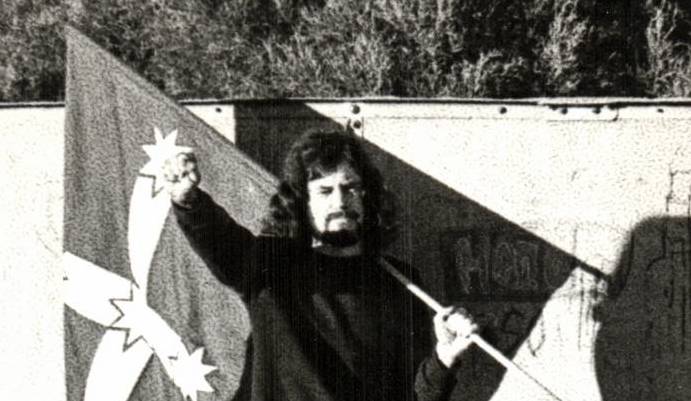
Paint-ups declaring “Independence for Australia” and “Close Down
Pine Gap” were daubed on any available road – side structure on the
road between Adelaide and Alice Springs.
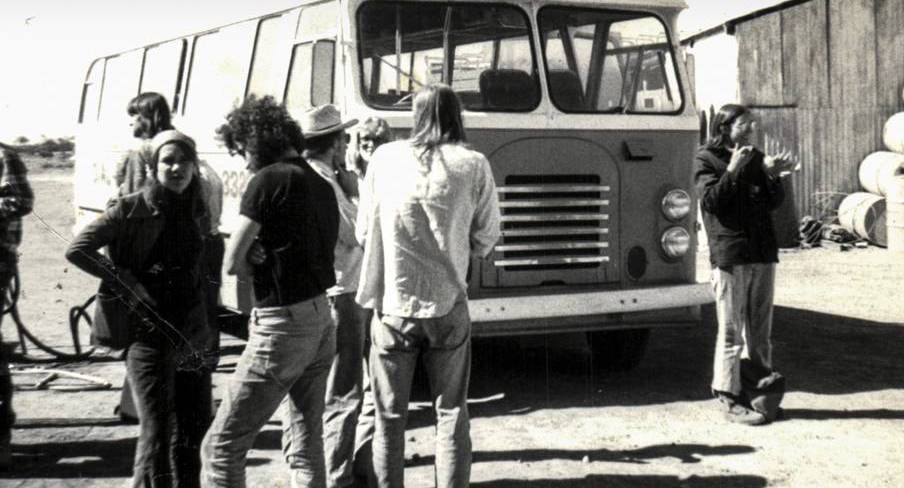
One of the hired buses used for the Pine Gap protest.
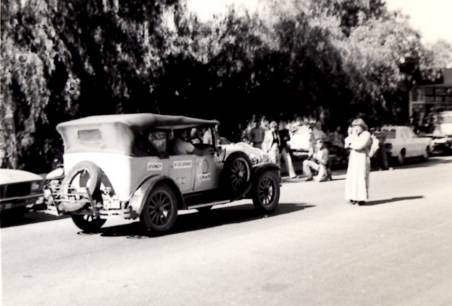
Counter protest by Country Party Senator Bernie Kilgariff using a vintage car rally.

Some of the anti-Pine Gap activists at the Heavitree Gap caravan
park on the outskirts of Alice Springs.

The adjacent motel to the caravan park where Commonwealth Police and ASIO spied on the protest camp.
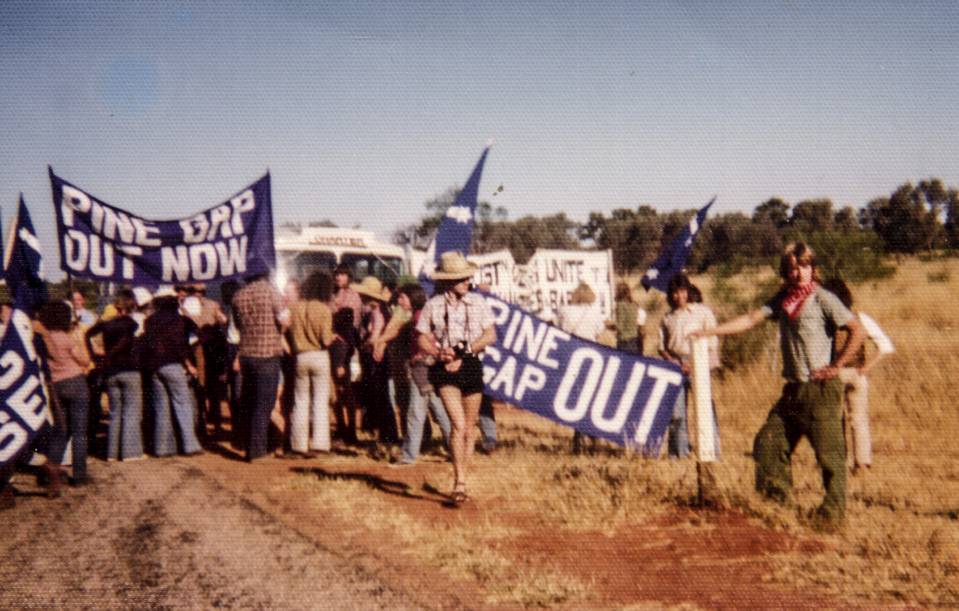
Marching to the front gate of the US CIA spy base Pine Gap.

A strategy meeting at the Heavitree Gap caravan park before heading
off to the Pine Gap base 20 km from Alice Springs.
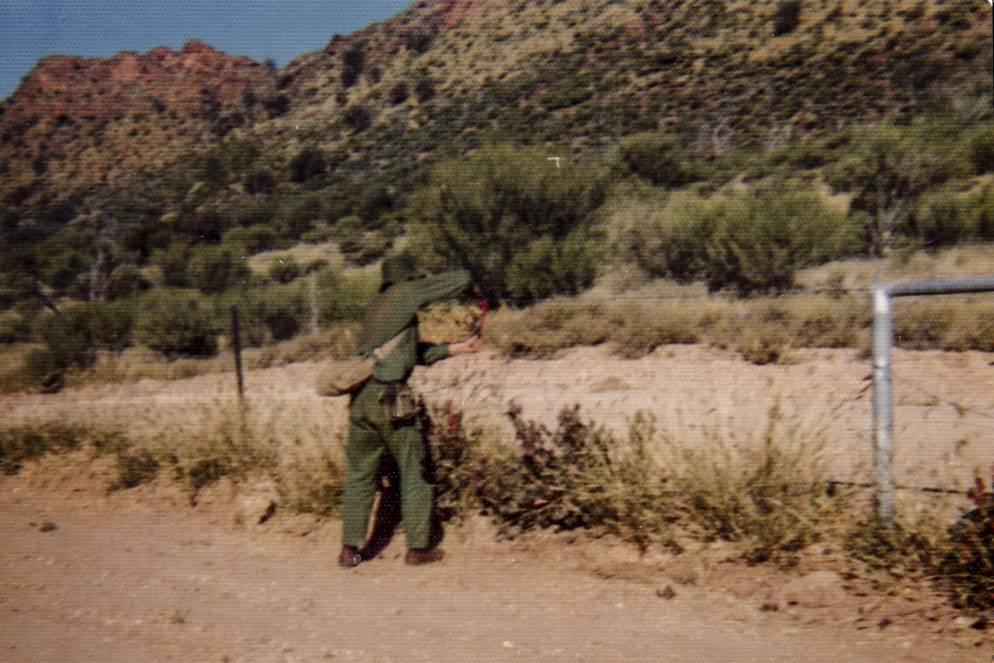
Breaking through the perimeter of Pine Gap and disappearing into
the scrub.

Marching to the front gate of the US CIA spy base Pine Gap.
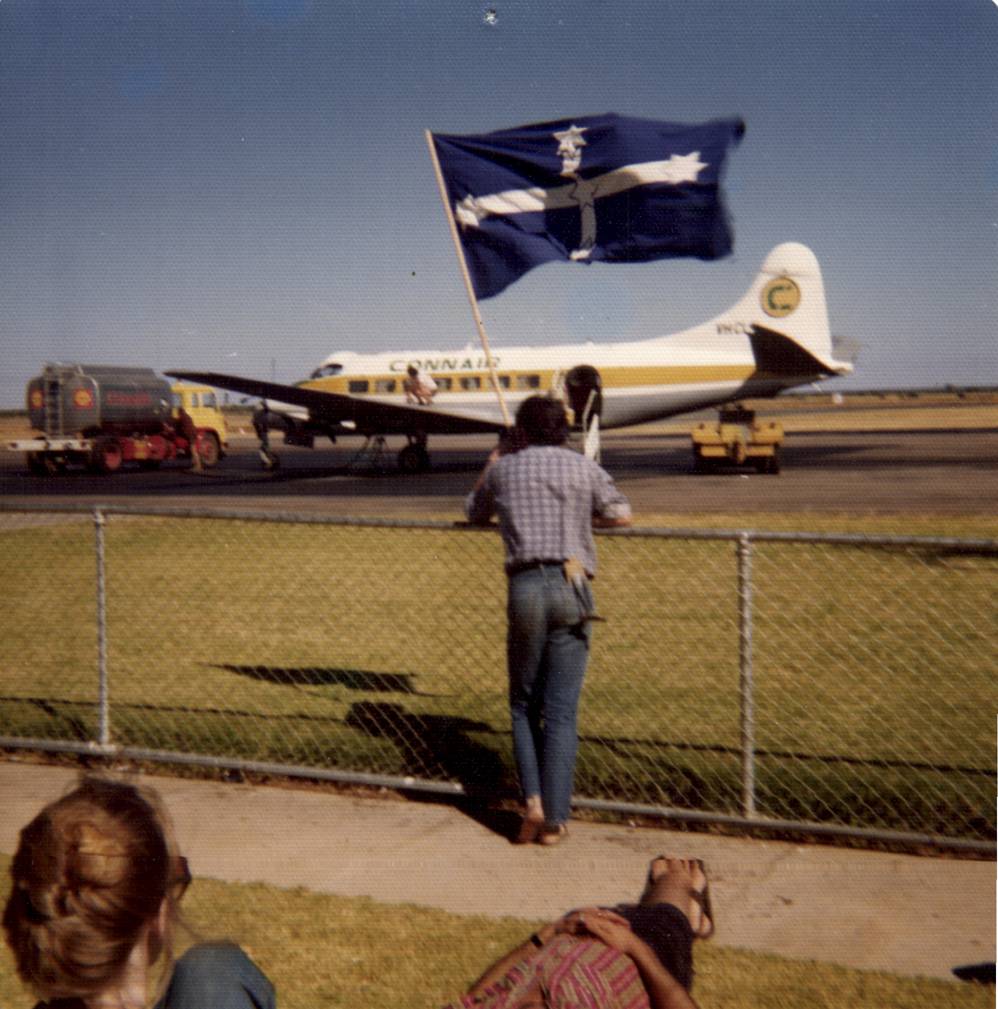
Protesting at Alice Springs Airport against the scheduled arrival of
a giant US military Starlifter plane that supplies the base from the
USA.

Street theatre in the main street of Alice Springs.
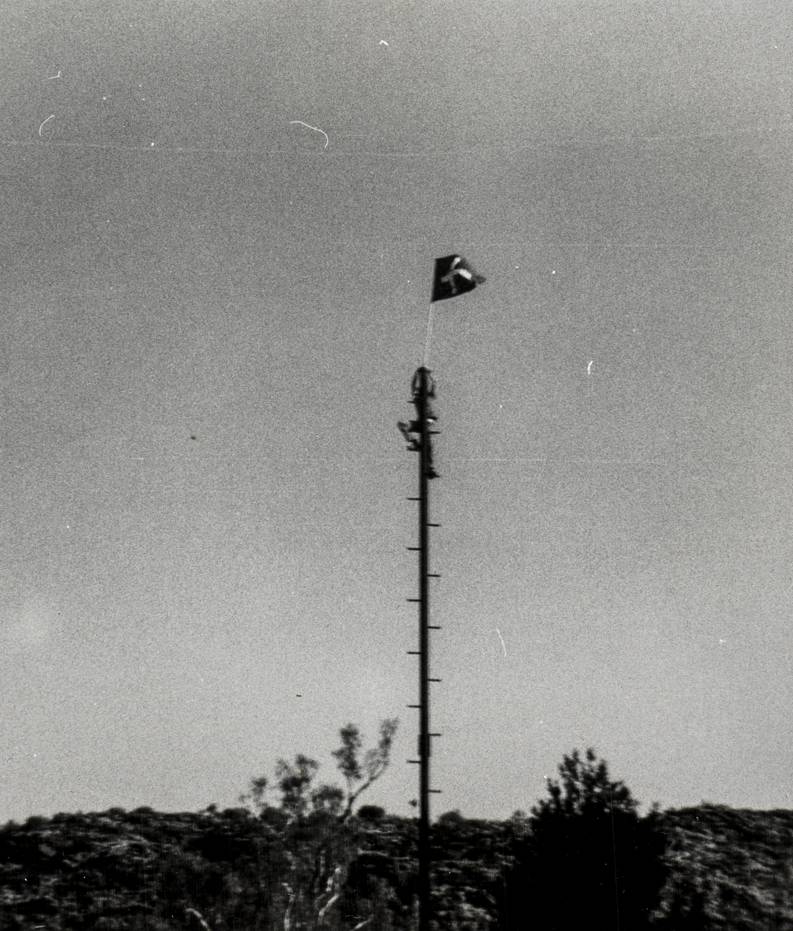
Ed Dyker flag penetration.
NURRUNGAR SPY BASE (May 22 1976)
Even though many people were tired, after some discussion, it was agreed a subset of the Pine Gap protest heading back to the southern States would try to get a look at and ‘wave the Eureka flag’ outside the even more mysterious US Spy base, Nurrungar.
Construction of the US Airforce Nurrungar Overseas Ground Station had begun in November 1969 and became operational by late 1970.
A formal US-Australian Agreement /Treaty was signed on the 10/11/1969, establishing the Joint Defence Space Communications Station.
Unlike the public kerfuffle in 1963 around the establishment of NW Cape, nothing similar seemed to happen around Nurrungar.
While at a stop over at the Woomera Village 500km north of Adelaide a small group travelled about 15km down an access track to the Nurrungar site.
It was well fenced off and a police road block made sure no one could get close. The radomes of the base could just be seen from the road sitting in a treeless, shallow valley. Photos were taken.
Nurrungar at the time was described as a key arms control and disarmament facility, crucial to maintaining a ‘balance’ between the superpowers. But there was no denying it enhanced the US ‘war-fighting abilities and therefore added to increasing global instability, making it also a nuclear target like NW Cape and Pine Gap.
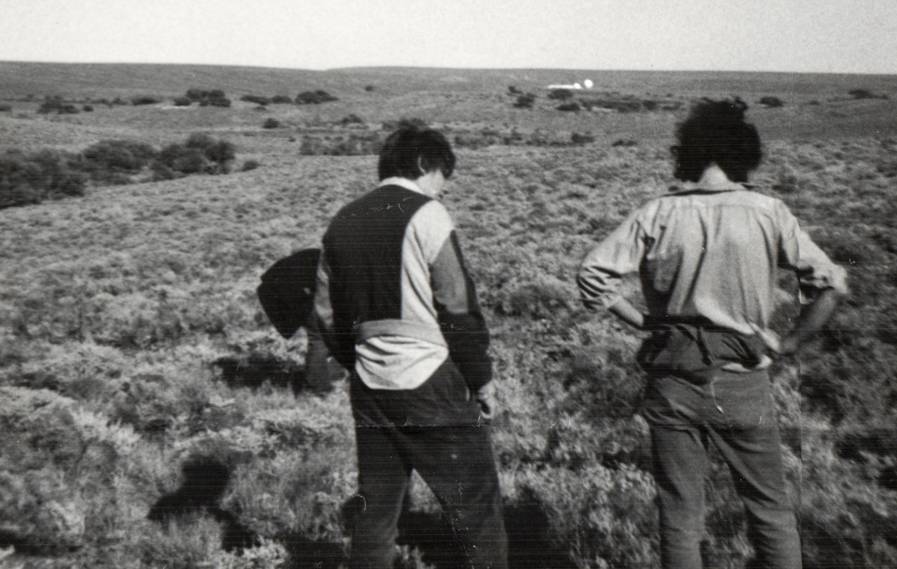
On the way back down south from Alice Springs a protest contingent
visited the other top secret US military base in the area, Nurrungar
16km outside the Woomera township. A police roadblock prevented a
closer inspection.
NARRUNGAR – “Long March”
(Sat 8th Oct – Mon 10th Oct 1977)
A year and a half after the brief visit to the US Narrungar military base, following the Pine Gap protest, CAFMBA (SA) organised a protest car cavalcade out of Adelaide in the second weekend of October 1977.
Part of the protest entailed stop overs at towns along the way up and back, including Port Pirie, Port Augusta and Woomera.
The message was straightforward: “Like the other Yank bases on Australian soil, Narrungar is a denial of our independence, and threatens to involve us in any world war between America and Russia” (Source – Australian Independence Voice, Vol 4, No 17, Sept 1977).
OMEGA – US NAVY COMMUNICATIONS BASE
Victoria (1977 – 78).
News of the US wishing to build a major military communications base adjacent McLaughlin Beach (Woodside) south of the major town of Sale in Gippsland Victoria, began to circulate in the early 1970’s.
It was called Omega and was to be the last of 8 such stations around the world.
The global Omega network was a central military communications signal relay for the US nuclear submarine fleet. Its specialised function was that it was designed to “talk to” submarines ‘while at depth’. That is, there was no longer a need for a submarine to surface in order to receive and transmit messages- meaning less exposure to attack or counter-attack.
Again, like the other US military bases on Australian soil, Omega would be an obvious nuclear target in a nuclear exchange. This time such a base was to be positioned in the most populous State in the country.
CAFMBA made distributing information about Omega a major priority for a number of years.
Protest banners and posters opposing the Omega base coming to Australia began around the end of the anti-Vietnam War period.
While the protests about NW Cape (1974) and Pine Gap and Nurrungar (1976) occurred, a watching brief was conducted on where Omega would be specifically located. In 1977 CAFMBA –Vic members discovered initial surveys being started just outside the small Gippsland town of Woodside on the South Gippsland Highway. Photos were taken.
Posters and leaflets detailing the location were quickly circulated. Even traffic STOP signs in suburban Melbourne were utilised.
An initial ‘awareness’ rally was called at the site that year. Victoria Police were in attendance.
In July 1978 a bigger rally was called at the site. The site project sign read: AUSTRALIAN NAVIGATION FACILITY- Department of Transport”. Again the alluding to the ‘joint facility’ fallacy and a blurring of its true military role. Yet another sign on the surrounding fence said “Trespassers will be prosecuted” under ‘Commonwealth military provisions’!
Again there was a heavy police presence.
Later at the nearby town of Sale a rally and leaflet distribution, highlighting the dangers of an Omega base in their backyard, was held in the main street.
Another site rally was held later in the year. However construction began in 1979 and was finished by early 1981, with the federal Fraser government insisting on calling it a ‘joint facility’.
With the Soviet Union continuing to expand its naval activities in the Indian Ocean, especially using a major base in Vietnam, on top of its hostile invasion of Afghanistan in Dec 1979, the ‘Cold War’ suddenly became hot for several years.
This didn’t stop CAFMBA raising the issue of foreign military bases in Australia, despite the broader global tensions making it a difficult task.
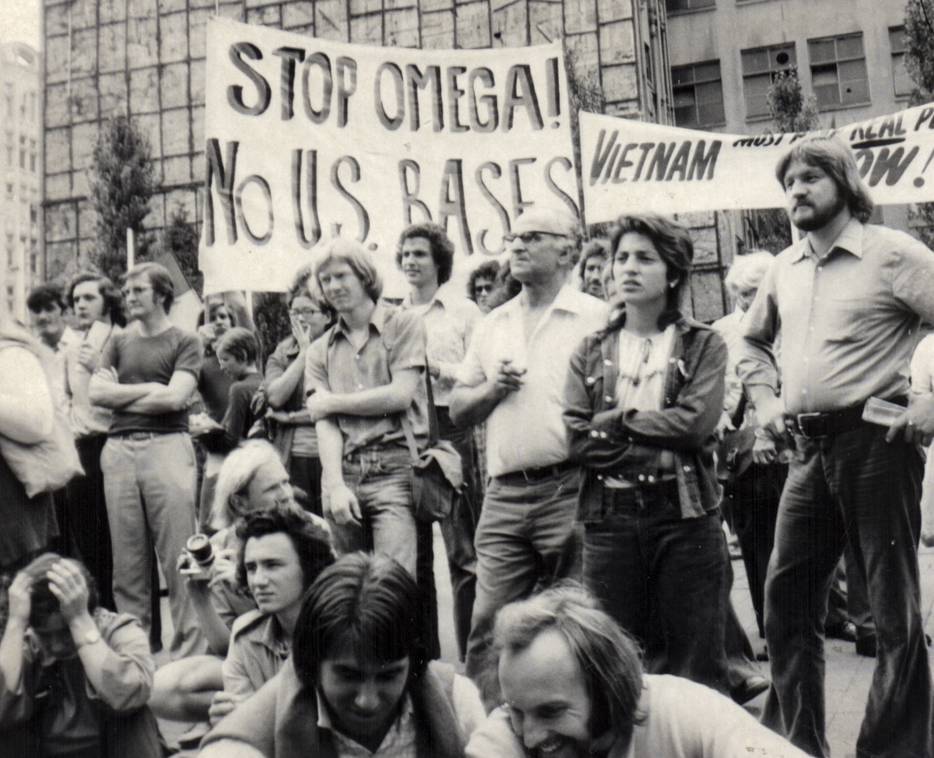
During the final years of the Vietnam War movement in the
early 1970’s awareness of the role of US bases in Australia grew.
The proposed US Navy Omega base planned for Victoria, became an
issue.
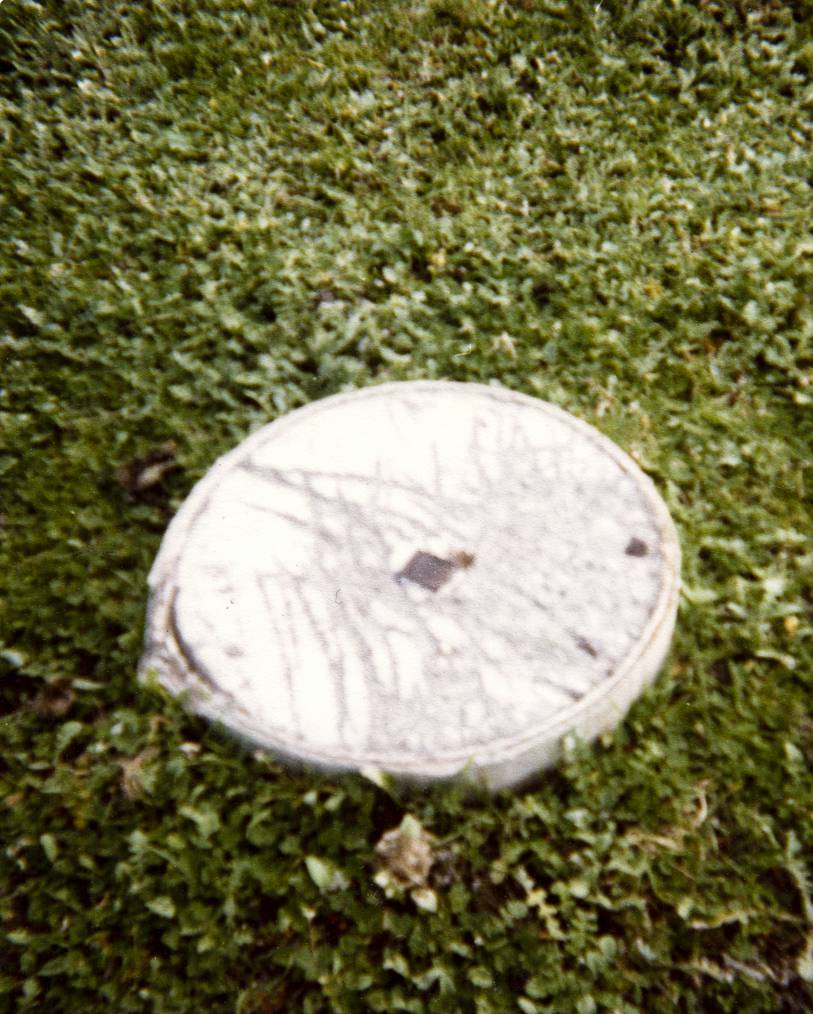
In 1977 initial works for the Omega base were discovered by
CAFMBA members outside the small town of Woodside in East
Gippsland.
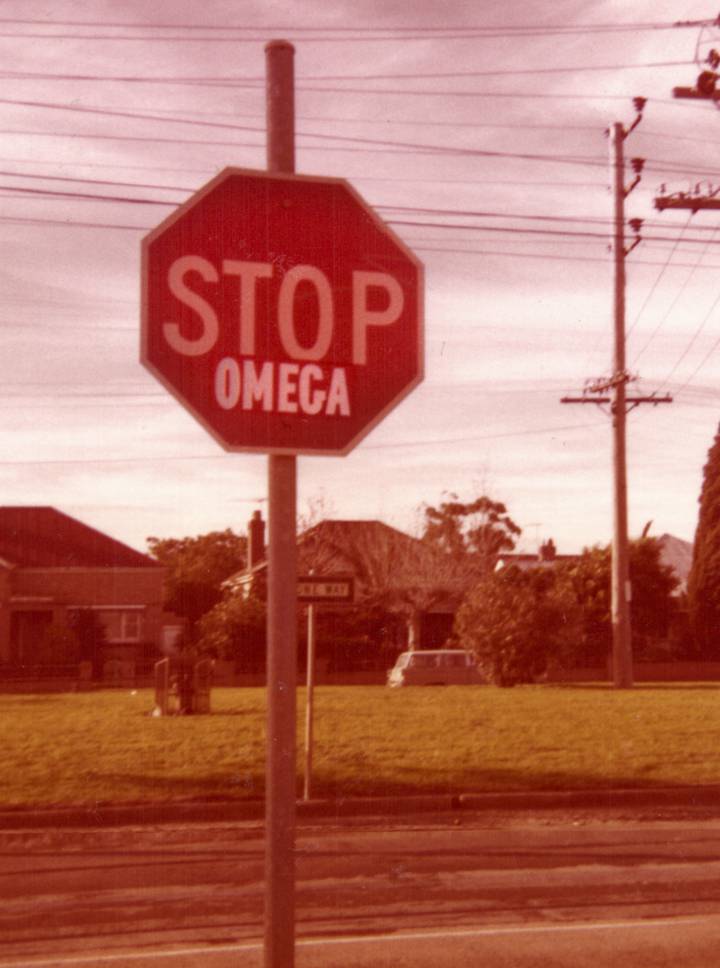
The anti-Omega campaign was highlighted in the suburbs of
Melbourne using “STOP” signs.

In 1978 a number of protests were held outside the Omega
construction site and in the nearest major town of Sale.

Omega rally

Omega rally
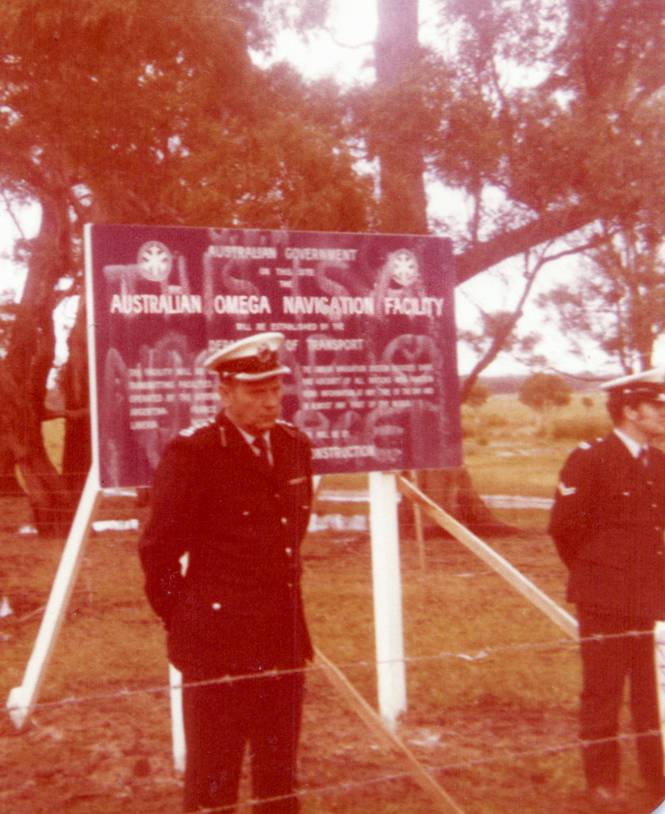
Omega rally
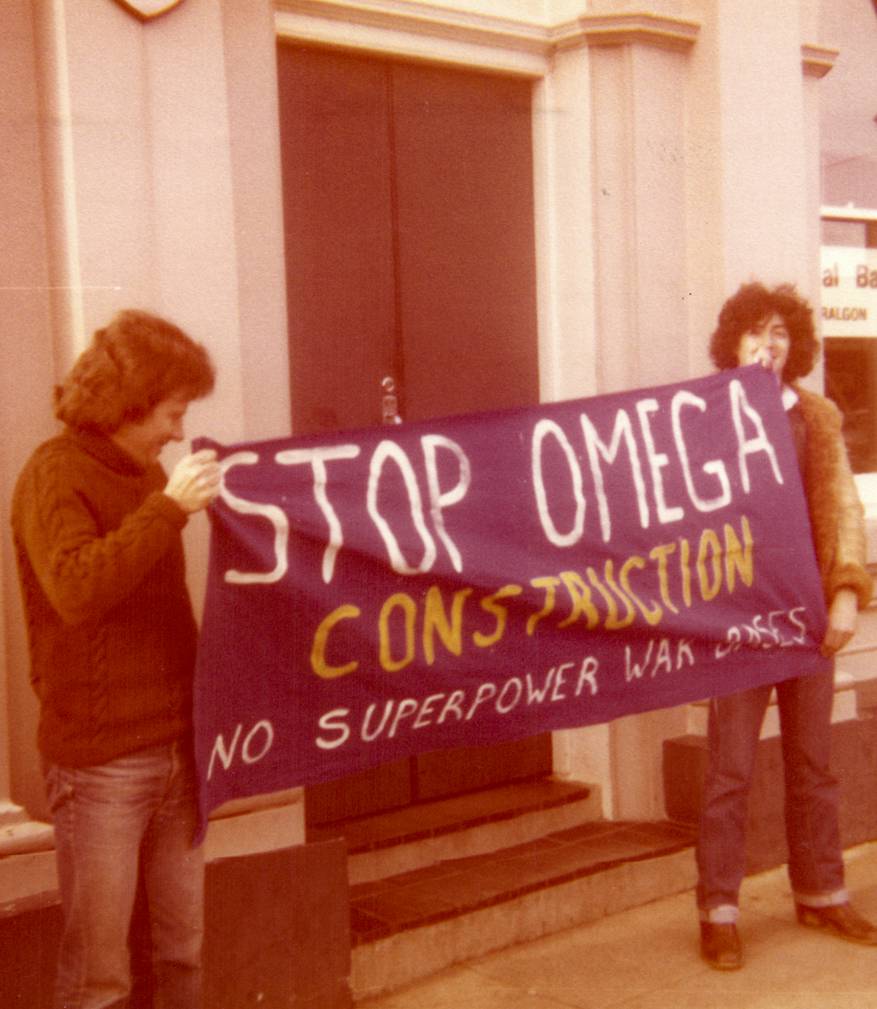
Omega rally
US COMMUNICATIONS SATELLITE DISH
(Australian Army –Simpson Barracks, WATSONIA ,
NE Melbourne) 1980.
In 1980 the US military, overseen by the US Navy Pacific HQ in Hawaii, was given the go-ahead to establish yet another satellite communications facility in Australia. This time it was to be located inside the Australian Army base in the North Eastern Melbourne suburb of Watsonia. The Watsonia base was the HQ for the Army’s Signal Corp.
The huge dish was assembled by Australian construction contractors in just over 12 months. The components came in by ship.
There was no publicity at all. No politicians of anypersuasion spoke about it in any terms. CAFMBA became aware of the new US base through the construction unions.
The local suburbs, including Watsonia, were leafletted. The material highlighted the nuclear status of the new base and emphasised it was just another cog in the massive US military presence on Australian soil.
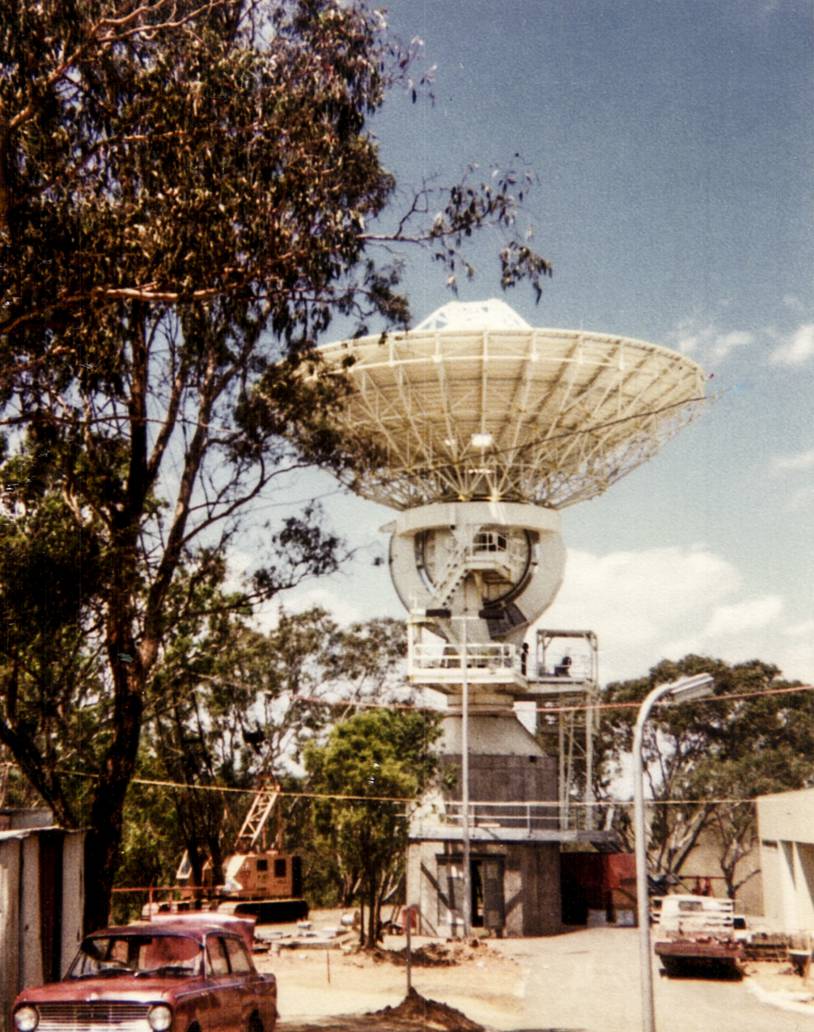
US Navy dish
Extra Notes
# By the early 1980’s politicians like Senator Nick Bolkus from SA made persistent attempts to force the Australian Government to provide more information and justifications for the Nurrungar spy base.
After the 1983 federal election the Hawke ALP government claimed it accepted a responsibility ‘to make known’ to the public more information about the purpose and functions of NW Cape, Pine Gap and Nurrungar. (No mention of all the other bases).
After ‘consultation’ with the ‘relevant authorities’ in the US, Hawke made a ministerial statement on the 6/6/1984. It was perfunctory. But it partial achieved what it was designed to do – undermine public debate with misinformation and half-truths.
The core issues of the bases being nuclear targets and their very existence being incompatible with national sovereignty , remained unaddressed. Anti – foreign bases remained a live issue with calls for relevant treaties and agreements not to be renewed on their expiry.
(Note – NW Cape agreement expired in 1988.It was automatically renewed).
# When, in 1983, US President Reagan announced his Strategic Defence Initiative (SDI) or “Star Wars” the Hawke government went to great lengths to say the so called US ‘joint facilities’ in Australia will NOT be associated with it.
With many anti – war protests occurring at the time PM Hawke in Feb 1985 while in Washington was forced to report: “We have been giving unqualified assurances by the government of the US that none of the joint facilities have any role in the research undertaken under the SDI”. What the Australian PM didn’t say was that he insisted that that be the case from his government’s position!
# Further protests at Pine Gap occurred in the 1980’s, 1990’s and into the 2000’s.
# In 1998 the head of the CIA conceded there were “strong concerns” about security matters during the Whitlam government of 1972 – 75.
He was responding to a John Pilger television series that claimed the CIA via British Intelligence ‘pushed’ for the 1975 dismissal of Whitlam. Colby asserted it was a co-incidence that this occurred while the CIA was “ in a dispute” with the Australian government at the time.
Colby said there were “serious security breaches” at the time, including Mr Whitlam identifying the CIA station chief responsible for Pine Gap and revealing the CIA man’s friendship with then Country Party leader and Deputy PM Doug Anthony. The Pilger doco said that the CIA was informed (not by Whitlam) that the ALP government was considering closing Pine Gap and that’s why Kerr was ‘persuaded’ to move on Whitlam.
#In July 2013 US NSA whistleblower Edward Snowden leaked a map of 4 Australian locations that play a key role in the “ US global intelligence collection “ network.
At the top of the list was Pine Gap. The other sites were Defence Satellite Communications at Geraldton (WA), Shoal Bay Receiving Station (Darwin NT) and HMAS Harman naval communications station (Canberra ACT). Once again the expose put the presence of all US bases in Australia back in the spotlight.
# Back in 2012 in the Rudd/Gillard era the Obama tilt to Oceania was fully supported. Led to US marine base established in Darwin etc.
#The role of John Kerr in 1975 –
In 1956 resigned from ALP and supported DLP.
In 1969 in the Industrial Court jailed Clarrie O’Shea
1940-45 During WW2 worked with Australian Intelligence liaising with US Intelligence
1950’s Joined the Association for Cultural Freedom (funded by the CIA)
1966 First Chair of Law Asia (CIA affiliate)
What happens now?
As long as Australia remains in the US-Australia military alliance and continues to host Pine Gap and the other US bases and US marines on Australian soil, the people of Australia will be inexorably drawn into conflict and major US wars around the world. Internationally, Australia will continue to be accurately identified as a lackey of the US, an integral part the American industrial-military apparatus and a US deputy sheriff.
The campaign commenced by the Australian people in late 1960s against foreign military bases, to close Pine Gap and for an independent Australia continued for 50 years. By raising awareness widely, spreading and disseminating facts and information in workplaces and communities; through discussions, public meetings and protests, this issue will become central in people’s minds when faced with the urgent threats of more devastating wars, and the suppression of Australia’s independence and sovereignty to make our own decisions. The Australian people don’t want our country to be subservient to any big power.
It is false to believe these bases are necessary for Australia’s defence. The best and most effective defence our country can have is a peaceful non-aligned independent foreign policy.
The need for an independent foreign policy is more than ever urgent.
Closing down foreign military bases, sending home US marines, removing Australia from the US-Australia military alliance and upholding our own independent and peaceful foreign policy is the best defence for Australia.
An independent and peaceful Australian foreign policy that builds peace and co-operation with other countries and people; aims to resolve conflicts peacefully and respects the integrity and national sovereignty of other countries and people, is the only real alternative to our successive governments’ subservience to big foreign powers’ military and economic interests, and collusion in their wars of aggression.
An independent and peaceful foreign policy will be the Australian people’s contribution towards making the world a more peaceful and secure place for both people and the environment.





